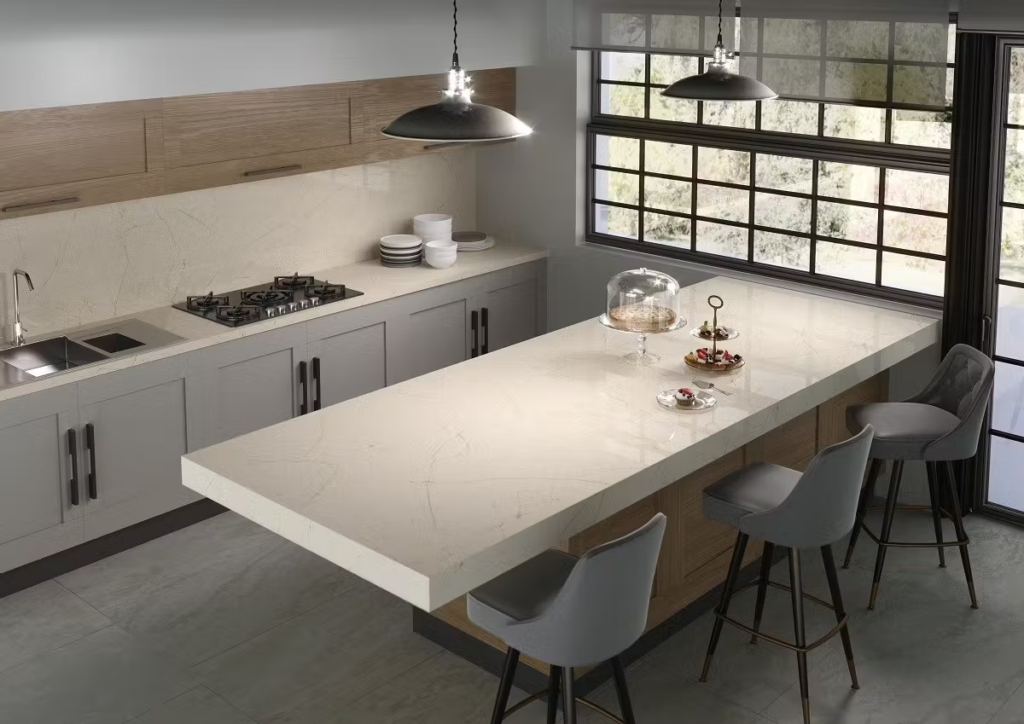When designing a home, selecting the right materials plays a crucial role in aesthetics, durability, and maintenance. Two of the most popular choices for countertops, flooring, and wall cladding are marble and granite. While both are natural stones with unique beauty, they differ significantly in terms of composition, durability, maintenance, and cost. This guide breaks down the key differences, pros, and cons of marble and granite to help you make the right decision for your home.
1. Understanding Marble and Granite
What is Marble?
Marble is a metamorphic rock formed from limestone subjected to high pressure and heat over time. It is known for its elegant veining patterns and luxurious appearance, making it a preferred choice for high-end interiors. However, marble is porous and softer compared to granite, which means it requires regular sealing to maintain its finish.
What is Granite?
Granite is an igneous rock composed of quartz, feldspar, and mica, giving it a speckled appearance. It is one of the hardest natural stones, making it highly resistant to scratches and heat. Unlike marble, granite material feature granite requires minimal maintenance and is an excellent option for areas with high traffic, such as kitchen countertops and flooring.

2. Key Differences Between Marble and Granite
| Feature | Marble | Granite |
|---|---|---|
| Composition | Metamorphic rock (limestone-based) | Igneous rock (quartz, feldspar, and mica) |
| Appearance | Veined patterns with a smooth, soft look | Speckled, grainy texture with varied colors |
| Durability | Softer, prone to scratches and stains | Harder, highly durable, scratch-resistant |
| Maintenance | Requires frequent sealing and care | Low maintenance, occasional sealing needed |
| Heat Resistance | Can withstand heat but prone to discoloration | Excellent heat resistance, ideal for kitchens |
| Water Absorption | More porous, absorbs liquids easily | Less porous, better resistance to moisture |
| Cost | More expensive, depending on the rarity | Generally more affordable than high-end marble |
3. Pros and Cons of Marble and Granite
Advantages of Marble
- Elegant and timeless aesthetic
- Unique veining makes each slab one of a kind
- Ideal for luxurious and sophisticated interiors
- Available in various color variations
Disadvantages of Marble
- Prone to staining from acidic substances like lemon and vinegar
- Requires frequent sealing and maintenance
- Softer surface makes it vulnerable to scratches
- Generally more expensive than granite
Advantages of Granite
- Extremely durable and long-lasting
- Scratch-resistant, making it ideal for kitchens and bathrooms
- Heat-resistant, perfect for high-temperature areas
- Less porous, reducing the chances of water absorption and staining
Disadvantages of Granite
- Limited veining compared to marble, stone durability giving a more uniform look
- Some varieties can be expensive depending on color and pattern
- Heavier than marble, requiring a strong base for installation
4. Where to Use Marble and Granite in Home Interiors?
Best Uses for Marble
- Bathroom countertops – Adds a spa-like luxury feel
- Flooring – Ideal for formal living areas and bedrooms
- Fireplace surrounds – Enhances elegance and style
- Sculptures and decorative elements – Perfect for a classic look
Best Uses for Granite
- Kitchen countertops – Withstands daily wear and tear
- Outdoor spaces – Ideal for patios and garden pathways due to its durability
- High-traffic flooring areas – Such as hallways and entryways
- Bathroom vanities – Resists moisture and stains better than marble
Which One Should You Choose?
If you prioritize luxury and elegance, marble is an unmatched choice. However, if you need durability and low maintenance, granite is the better option. Consider factors like budget, usage, and design preference before making your decision.
Also Read : Elevate Your Home Decor with Stunning Gold Color Combinations